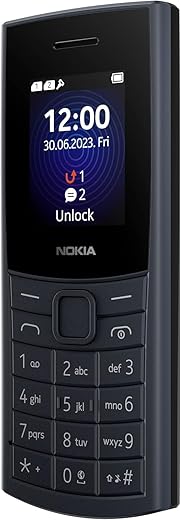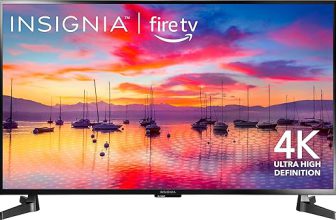
As someone who loves capturing moments through photography, I understand how overwhelming it can be to choose the right smartphone with the perfect camera features. With so many options available, it’s easy to feel lost in the sea of specifications and marketing claims. In this blog post, I’ll break down the essential camera features you should consider, ensuring you find a smartphone that meets your unique photography needs. Whether you’re a casual snapper or an aspiring photographer, I’m here to help you make an informed choice that elevates your photography experience.



Understanding Camera Megapixels
When it comes to mobile phone cameras, the term “megapixels” is often thrown around in marketing materials, but what does it really mean for your photography? Megapixels (MP) refer to the number of individual pixels that make up an image. More specifically, one megapixel equals one million pixels. Higher megapixel counts typically translate to greater image resolution, which can enhance the detail captured in a photograph.



The Impact of Megapixels on Image Resolution
A higher megapixel count can provide several advantages, primarily in terms of image resolution and detail. For instance, a smartphone with a 108 MP camera, like the Samsung Galaxy S21 Ultra, can capture images at a resolution of 12,032 x 9,024 pixels. This level of detail allows for significant cropping without losing image quality, making it easier to focus on specific elements of a scene or to create large prints without pixelation.
Practical Example:
- Samsung Galaxy S21 Ultra: 108 MP camera, ideal for high-resolution prints and cropping.
- iPhone 14 Pro: 48 MP camera, balances high resolution with excellent color accuracy and low-light performance.
Balancing Megapixels with Other Features
While a higher megapixel count can enhance image quality, it’s crucial to consider it alongside other camera features. Here are some key aspects to balance when evaluating a mobile camera:
- Sensor Size: Larger sensors typically gather more light, improving performance in low-light conditions. For example, the Google Pixel 7 Pro has a smaller sensor than the Galaxy S21 Ultra but excels in low-light photography due to its advanced computational photography techniques.
- Lens Quality: The quality of the lens affects how much light enters the camera and the sharpness of the images. For instance, the OnePlus 10 Pro features a Hasselblad-branded lens that delivers impressive sharpness and color rendition.
- Image Processing Software: High-quality software can enhance images taken at lower megapixel counts. The iPhone 14 Pro’s image processing relies on computational photography to provide superior results compared to a higher megapixel camera with poor software.
Megapixels Alone Do Not Determine Image Quality
It’s essential to recognize that megapixels are not the sole determinant of photo quality. Here are several factors that contribute to the overall performance of a mobile phone camera:
- Dynamic Range: The ability of the camera to capture details in both shadows and highlights. For example, the Sony Xperia 1 IV excels due to its superior dynamic range, making it great for landscapes.
- Low-Light Performance: Some cameras perform better in low light due to advanced sensor technology and image processing algorithms. The Google Pixel series is renowned for its night mode, which can produce bright, clear images even in dim conditions.
- Autofocus Speed and Accuracy: Quick and precise autofocus systems can make a significant difference in capturing sharp images, especially in dynamic or fast-moving situations.
Key Takeaways
When selecting a smartphone for photography, consider the following:
| Feature | Importance | Example Device |
|---|---|---|
| Megapixels | Higher counts yield better detail | Samsung Galaxy S21 Ultra (108 MP) |
| Sensor Size | Larger sensors improve low-light performance | Google Pixel 7 Pro |
| Lens Quality | High-quality lenses enhance sharpness | OnePlus 10 Pro (Hasselblad lens) |
| Image Processing Software | Effective algorithms improve photo quality | iPhone 14 Pro |
| Dynamic Range | Captures details in highlights/shadows | Sony Xperia 1 IV |
| Low-Light Performance | Crucial for nighttime photography | Google Pixel series |
| Autofocus Speed & Accuracy | Essential for capturing sharp images | iPhone 14 Pro |
By understanding these factors, you can make a more informed decision when choosing a smartphone camera that meets your photography needs. Remember, while megapixels are an important aspect, they should be considered alongside other camera features for the best overall performance.
Aperture Size
Aperture size plays a crucial role in photography, influencing both the amount of light that enters the camera and the depth of field in your images. This section will break down these concepts and illustrate their importance with practical examples.



The Role of Aperture Size in Light Intake
Aperture refers to the opening in a camera lens through which light passes. The size of this opening is measured in f-stops, represented as a fraction (e.g., f/2.8, f/4, f/5.6).
- Larger Aperture (Lower f-stop number): Allows more light to hit the camera sensor. For instance, a lens with an aperture of f/1.8 can gather significantly more light than one set at f/4.
- Smaller Aperture (Higher f-stop number): Limits the amount of light entering the camera, which can be useful in bright conditions. For example, f/11 is often used in landscape photography to ensure adequate depth of field and sharpness throughout the image.
Practical Example
The Canon EF 50mm f/1.8 STM lens is an excellent example of a lens with a large aperture. This lens is popular among portrait photographers because its f/1.8 aperture allows for excellent light intake, making it suitable for low-light situations, such as indoor shoots or during twilight.
Depth of Field and Its Importance
Depth of field (DoF) refers to the range of distance within a photo that appears acceptably sharp. A wider aperture (lower f-stop number) results in a shallower depth of field, which can beautifully isolate your subject from the background.
Benefits of Shallow Depth of Field
- Focus on the Subject: With a blurred background, the viewer’s attention is directed towards the subject. This technique is particularly desirable in portrait photography.
- Aesthetic Appeal: A blurred background, often referred to as “bokeh,” can add an artistic touch to photos.
Specific Example
The Nikon AF-S NIKKOR 85mm f/1.8G lens is another excellent choice for achieving a pleasing bokeh effect in portrait photography. Its large aperture not only allows for better low-light performance but also creates that sought-after separation between the subject and the background.
Importance of Lower f-stop Numbers in Low-Light Conditions
In low-light environments, a lower f-stop number is essential for capturing clear images without excessive noise or blur. Here are some key advantages:
- Increased Light Gathering: Lower f-stop lenses can absorb more light, which is critical for reducing the shutter speed and minimizing motion blur.
- Better ISO Performance: Using a lower f-stop permits photography at lower ISO settings, resulting in cleaner images with less noise.
Comparison Table: Aperture Sizes and Their Effects
| Aperture Size | Light Intake | Depth of Field | Ideal Use Cases |
|---|---|---|---|
| f/1.8 | High | Shallow | Portraits, low-light conditions |
| f/4 | Moderate | Moderate | General photography, landscapes |
| f/8 | Lower | Deeper | Landscapes, macro photography |
| f/11 | Minimal | Very Deep | Landscape photography, ensuring sharpness throughout |
Image Stabilization
Image stabilization is a crucial feature in modern smartphones, enabling users to capture clear and sharp photos and videos, even in challenging conditions. With the increasing demand for high-quality imagery, manufacturers have developed various types of stabilization technologies. The two most common types found in smartphones are Optical Image Stabilization (OIS) and Electronic Image Stabilization (EIS). Each has its unique advantages and applications.
Optical Image Stabilization (OIS)
Optical Image Stabilization (OIS) is a hardware-based feature that physically moves the camera lens or the sensor to counteract any unwanted movements. This mechanism is particularly beneficial in low-light situations or when shooting at slower shutter speeds.
How OIS Works
- Gyroscope Sensors: OIS uses gyroscope sensors to detect movement.
- Lens Adjustment: When movement is detected, the lens or sensor shifts to compensate, reducing the impact of shakes or vibrations.
Benefits of OIS
- Reduced Blurriness: Especially effective in low-light conditions, OIS helps to reduce blurriness caused by hand movement.
- Better Low-Light Performance: Allows for longer exposure times without introducing blur, making night photography clearer.
- Smooth Video Recording: Minimizes shakes when recording videos, providing a more cinematic experience.
Examples of Smartphones with OIS
- Apple iPhone 14 Pro: Utilizes advanced OIS technology to deliver stunning low-light photos and stable videos.
- Samsung Galaxy S23 Ultra: Features superior OIS capabilities that enhance both photo and video quality, particularly in dynamic environments.
- Google Pixel 7: Known for its effective OIS, which significantly improves low-light performance and overall image quality.
Electronic Image Stabilization (EIS)
Electronic Image Stabilization (EIS) is a software-based solution that processes video frames to reduce the effects of camera shake. While it is primarily used in video recording, EIS can also be applied to still images to some extent.
How EIS Works
- Frame Analysis: EIS analyzes consecutive video frames to identify motion.
- Cropping and Adjusting: The software crops the edges of the frames and adjusts them to create a smoother, more stable video output.
Benefits of EIS
- Enhanced Video Quality: Provides a smoother video experience, especially in action shots or while moving.
- Versatility: Can be applied to any video recording, regardless of lighting conditions.
- Cost-Effective: EIS does not require additional hardware, making it a cost-effective solution for manufacturers.
Examples of Smartphones with EIS
- OnePlus 11: Offers impressive EIS capabilities, making it a popular choice for vloggers and content creators.
- Xiaomi Mi 13: Features advanced EIS for smooth video recording, even during physical activities.
- Sony Xperia 1 V: Known for its robust EIS, which is particularly handy for filming while on the move.
Comparing OIS and EIS
| Feature | Optical Image Stabilization (OIS) | Electronic Image Stabilization (EIS) |
|---|---|---|
| Method | Hardware-based | Software-based |
| Best For | Low-light photography | Video recording |
| Effectiveness | Reduces blurriness in photos | Smoothens video playback |
| Cost | Typically higher due to hardware | Generally lower, relies on software |
| Examples | iPhone 14 Pro, Galaxy S23 Ultra | OnePlus 11, Xiaomi Mi 13 |
Real-World Applications
Capturing Motion
When capturing fast-moving subjects, such as during sports events or while filming action scenes, both OIS and EIS play crucial roles:
- OIS: For still shots of athletes in motion, OIS will help to keep the image sharp despite the natural shakes of the photographer.
- EIS: For filming a skateboard trick, EIS will reduce the shaky footage typically associated with handheld shooting, resulting in smoother playback.
Low-Light Environments
In scenarios with limited light, like a concert or a night walk:
- OIS: Allows for longer exposure times without introducing blur, leading to better quality images in darker settings.
- EIS: While primarily for video, it helps make low-light footage more stable, reducing the flicker and jitter often seen in handheld recordings.
By understanding the differences and applications of OIS and EIS, smartphone users can make more informed choices about their photography and videography needs, ensuring they capture the best possible moments.
Key Takeaways for Choosing the Perfect Smartphone Camera
In conclusion, choosing the right smartphone camera involves a careful evaluation of several key features, including megapixel count, aperture size, and image stabilization, along with any additional capabilities that may enhance your photography experience. By taking the time to understand these elements, I can ensure that I select a device that aligns with my personal photography style and requirements, ultimately allowing me to capture high-quality images and videos with ease.







I used to think megapixels were everything, but after getting the Google Pixel 7, I’ve realized it’s more about the software and processing power. The photos are stunning!
Absolutely! Software plays a huge role in image quality. The Pixel series is well-known for its computational photography capabilities. Glad to hear you’re enjoying it!
One pain point I have is that some phones have great specs but still take awful pictures in real life. Like, the Samsung Galaxy S21 Ultra has amazing specs, but sometimes the photos look over-processed.
I think it would be cool if you compared some popular smartphones side by side. Like, how do the cameras of the Samsung Galaxy S23 and the OnePlus 11 stack up against each other?
That’s a great suggestion! A side-by-side comparison could really help readers make informed choices. I’ll consider adding that for a future post!
Can you provide more details on how image stabilization works? Like, is OIS really that much better than EIS?
I recently bought the iPhone 14 Pro, and the camera quality is insane! The ProRAW feature really helps with editing too.
Thanks for sharing your experience! The iPhone 14 Pro is definitely one of the top contenders for smartphone photography. ProRAW is a game-changer for those who like to edit their photos!
I’m curious, for someone just starting out, would you recommend the OnePlus Nord N20 or the Google Pixel 6a for good camera quality on a budget?
Both are solid choices! The Pixel 6a generally has better camera performance due to its software features, but the Nord N20 offers a great overall experience. It really depends on your priorities!
Totally agree about image stabilization! I’ve noticed that my videos are so much smoother with the OIS on my iPhone SE. It’s a game-changer for vlogging!
Glad you’re finding it useful! OIS really does make a difference, especially for video content. Keep on vlogging!
Hey, could you go more in-depth about how aperture size actually affects low-light photos? I always hear it’s important but never really understood why!